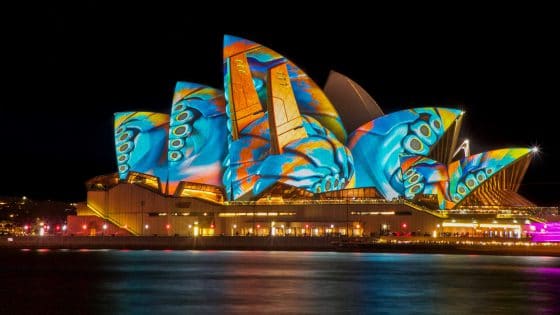By Suki Lin, Senior Director, SEA & ANZ, Nativex
The 2020 Singles’ Day shopping festival is now officially over, and this year has seen some remarkable sales, even despite COVID-19. Even though there was a prolonged slowdown in consumer spend, shopping trends were expected to spike during the widespread offers, discounts and sales rolled out in conjunction with Singles’ Day – an occurrence that could be termed as ‘revenge shopping’.
While many analysts estimated impressive sales figures resulting from this year’s sale, the actual numbers far exceeded all predictions. This year, the sales from Singles’ Day stood at US$75.8 billion, shattering last year’s record sales of US$38 billion. Comparatively, the Black Friday shopping festival was projected to make just US$11 billion in sales – adding up to just a fraction of 11.11 earnings. As a result, Singles’ Day is likely to be the largest shopping festival this year in terms of sales.
With the remarkable success of 2020’s Singles’ Day festival, here are five overarching takeaways observed – revealing the evolution of consumer habits, key factors of growth, and future trends that can be leveraged:
1. Higher ad budgets are being allocated to short-form video
The implementation of widespread lockdowns through much of 2020 caused the popularity of short-form videos to increase exponentially, as consumers spent more time at home and watching these videos. As of September this year, 77.5% of Asia Pacific were digital video viewers.
As short-form video platforms witness significant growth, advertisers have started to shift their budgets to these platforms, making media buying tools like XMP crucial for media buyers looking to streamline their campaign workflow across platforms. XMP is the first multi-channel media buying platform that connects top media channels in China to global markets. This tool is valuable for brands and advertisers looking to increase their efficiency with artificial intelligence (AI) automation and boost campaign performance with cloud-based creative management and insights.
Advertisers also prioritised short-form videos as the primary form of advertising for top-performing consumer brand categories – beauty and personal care, food and beverages and outdoors and sportswear. The growing importance of employing short-form videos also highlights the need for advertisers to focus on creative and highly engaging content to retain the attention of their consumers today.
2. KOLs were a major growth engine for Singles Day in 2020
Influencers, or key opinion leaders (KOLs), were predicted to be a driving force behind this year’s Singles’ Day sales, especially because of the presence they command on short-form video platforms, such as Douyin and Kuaishou. Chinese KOLs have been consistently driving sales in the social commerce sphere, prior to Singles’ Day. According to data from Nativex, more than half of China’s mobile users refer to recommendations made by KOLs before making a purchase, with over a third of such recommendations resulting in sales.
In China, the Singles’ Day shopping season began on November 1st. Just across the first day of the festival, famous influencer Viya Huang raked in almost 3.8 billion yuan (US$581 million) in pre-sales on live streaming platform Taobao Live. Influencer Li Jiaqi (also known as the ‘King of Lipsticks’) similarly showcased similarly outstanding results – his livestream on the first night of the 11.11 shopping season attracted over 140 million viewers, and 10 million retail items, worth a total of 3.91 billion yuan (US$599 million, were sold during that period.
3. Consumers are becoming more rational
While shopping festivals like Singles’ Day, Black Friday, or Amazon Prime Day tend to see consumer electronics driving huge volumes of sales, consumers have shifted away from traditional spending habits this year.
Based on advertising budget distributions, verticals like food and beverage, beauty and personal care, as well as outdoor and sportswear demonstrated the most growth. This aligns with emerging consumer trends, where shoppers are prioritising food and personal care over electronics at this time. Additionally, consumers made less purchases of clothing this year – potentially resulting from the COVID-19 pandemic, which decreased the possibility of social gatherings.
4. There was an even distribution of consumer demographics
Despite its name, the Singles’ Day shopping festival has been widely adopted by consumers across all demographic groups, regardless of age, gender, and social status. In China, women make up about 56.3% of today’s e-commerce users. Out of 710 million online shoppers in the country, a third of the shoppers are aged between 31 and 40.
Within China, there was also strong representation from lower-tier cities this year, with almost 60% of shoppers originating from those areas. This further emphasises the increasing size, strength and purchasing power of China’s expanding consumer market, year on year – and it will be a key segment for global brands and advertisers looking to enter China’s massive mobile market.
These statistics appear to be consistent with China’s overall e-commerce demographics, suggesting that Singles’ Day amplifies existing shopping habits and tendencies rather than completely changing them. Given the growing diversity of consumer profiles and evolving preferences, advertisers will have to adjust their marketing strategies accordingly to target their ideal consumer groups and drive conversion.
5. E-commerce live streaming is here to stay
This Singles’ Day further affirmed that e-commerce live streams are not a temporary trend, and will continue to serve as an increasingly important customer channel in the e-commerce space. As KOLs utilised live streaming as their primary tool of reaching audiences, this combination served to be powerful engines of growth in the e-commerce sector.
The popularity of e-commerce live streams on Singles’ Day underlines the strong trend that has been growing rapidly in the last few years in China – as of June 2020, over 10 million e-commerce live streams were launched, more than 20 million products were featured. According to China’s Ministry of Commerce, the number of live streaming users have reached 562 million in June 2020. Live streaming is projected to bring in about $125 billion in sales this year in China alone, an almost-100% increase from $63 billion last year.
This year’s Singles’ Day broke all sorts of records and it was able to do so thanks to a few factors – from influencers (or KOLs) leading millions of sales, to short-form video platforms hosting the largest e-commerce live streaming events. Additionally, with COVID-19 halting consumer spend earlier in the year, the pent-up demand of consumers led to a strong rebound in online retail, leading to the “revenge shopping” phenomenon.
It will be incredible to see this year’s sales records broken anytime soon, but one thing is certain: China’s mobile commerce spending power is stronger than ever, and its potential will continue to present strong opportunities for brands and advertisers from China and globally to attract new audiences and increase market share.
Do you have an article, infographic, podcast, presentation slides, press release or a key individual from your organisation that you'd like to highlight on Marketing In Asia? Head on over to Upload Your Content for more info.



















